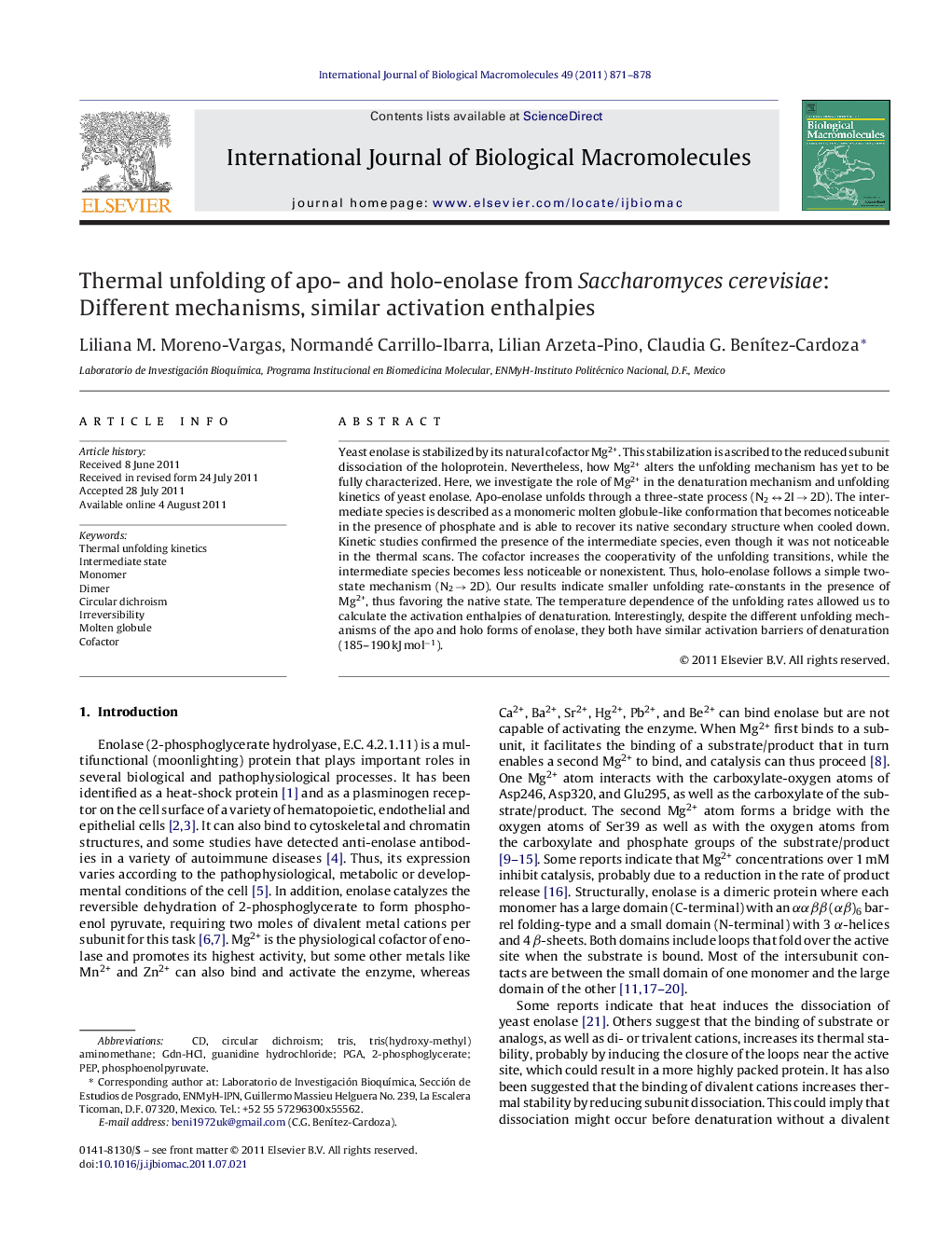| کد مقاله | کد نشریه | سال انتشار | مقاله انگلیسی | نسخه تمام متن |
|---|---|---|---|---|
| 8335170 | 1540278 | 2011 | 8 صفحه PDF | دانلود رایگان |
عنوان انگلیسی مقاله ISI
Thermal unfolding of apo- and holo-enolase from Saccharomyces cerevisiae: Different mechanisms, similar activation enthalpies
دانلود مقاله + سفارش ترجمه
دانلود مقاله ISI انگلیسی
رایگان برای ایرانیان
کلمات کلیدی
PGAPEPTRISGdn-HCl2-phosphoglycerate - 2-فسفوگلسراتIrreversibility - برگشت ناپذیریintermediate state - دولت متوسطDimer - دیمرcircular dichroism - رنگ تابی دورانیphosphoenolpyruvate - فسفوآنولپیرواتMonomer - مونومرCofactor - کوفتاکرMolten globule - گلوله گلولهGuanidine hydrochloride - گوانیدین هیدروکلراید
موضوعات مرتبط
علوم زیستی و بیوفناوری
بیوشیمی، ژنتیک و زیست شناسی مولکولی
زیست شیمی
پیش نمایش صفحه اول مقاله

چکیده انگلیسی
Yeast enolase is stabilized by its natural cofactor Mg2+. This stabilization is ascribed to the reduced subunit dissociation of the holoprotein. Nevertheless, how Mg2+ alters the unfolding mechanism has yet to be fully characterized. Here, we investigate the role of Mg2+ in the denaturation mechanism and unfolding kinetics of yeast enolase. Apo-enolase unfolds through a three-state process (N2 â 2I â 2D). The intermediate species is described as a monomeric molten globule-like conformation that becomes noticeable in the presence of phosphate and is able to recover its native secondary structure when cooled down. Kinetic studies confirmed the presence of the intermediate species, even though it was not noticeable in the thermal scans. The cofactor increases the cooperativity of the unfolding transitions, while the intermediate species becomes less noticeable or nonexistent. Thus, holo-enolase follows a simple two-state mechanism (N2 â 2D). Our results indicate smaller unfolding rate-constants in the presence of Mg2+, thus favoring the native state. The temperature dependence of the unfolding rates allowed us to calculate the activation enthalpies of denaturation. Interestingly, despite the different unfolding mechanisms of the apo and holo forms of enolase, they both have similar activation barriers of denaturation (185-190 kJ molâ1).
ناشر
Database: Elsevier - ScienceDirect (ساینس دایرکت)
Journal: International Journal of Biological Macromolecules - Volume 49, Issue 5, 1 December 2011, Pages 871-878
Journal: International Journal of Biological Macromolecules - Volume 49, Issue 5, 1 December 2011, Pages 871-878
نویسندگان
Liliana M. Moreno-Vargas, Normandé Carrillo-Ibarra, Lilian Arzeta-Pino, Claudia G. BenÃtez-Cardoza,